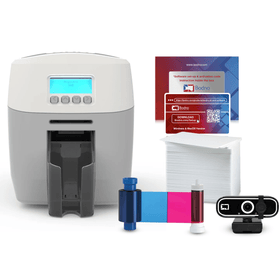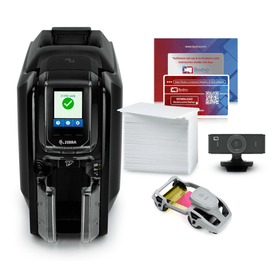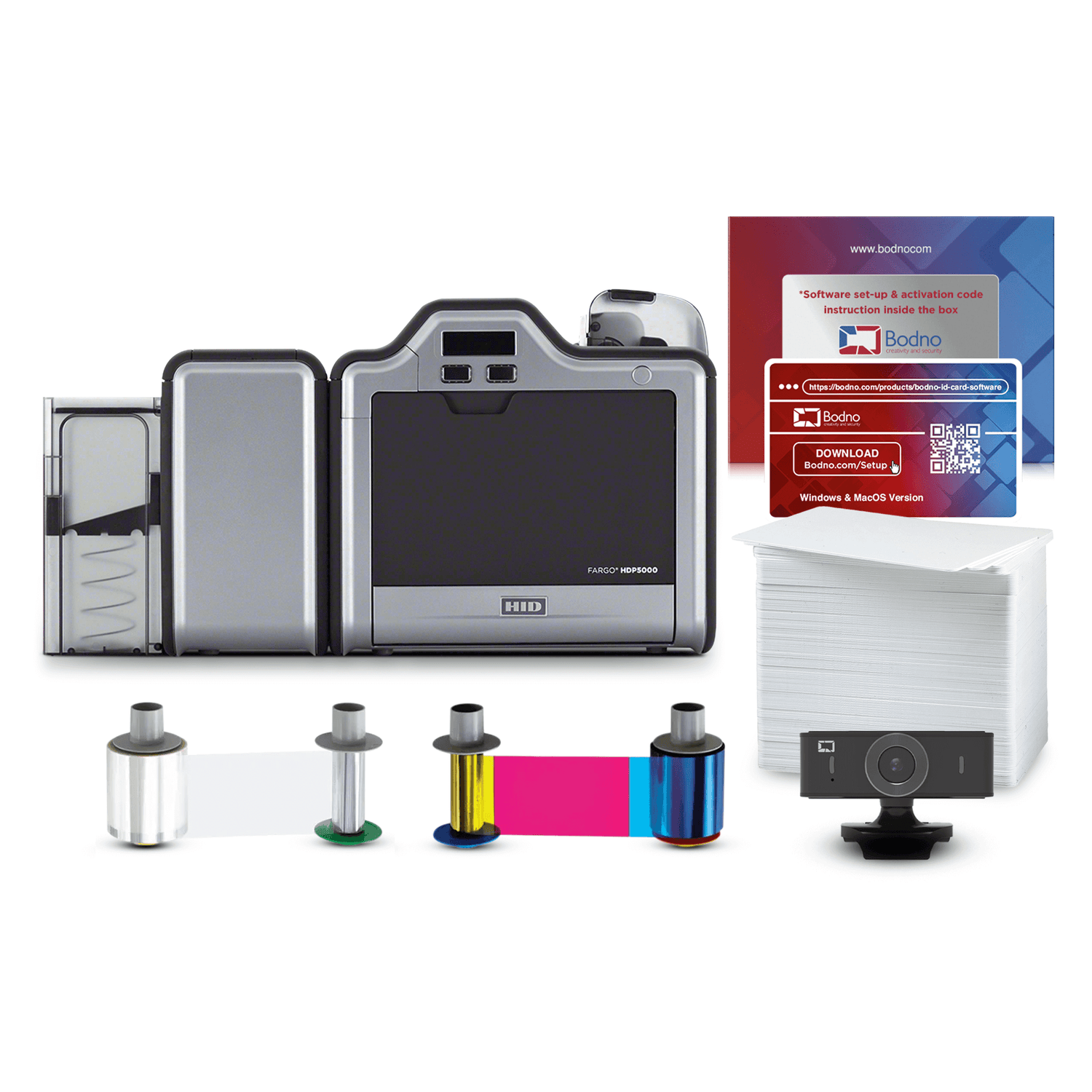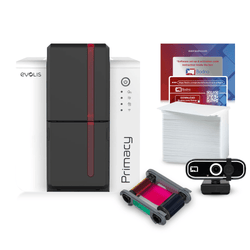Creating durable and quality employee ID cards all starts with choosing the right printer. Whether you're running a small office or a big company, having the perfect card printer can make a huge difference in keeping things organized and secure. There are so many brands and choices to consider. In this article we’ll go over common mistakes to avoid, what needs you should consider, and provide some examples of ideal employee card printers.
Don’t Select the Cheapest Printer You Can Find
While selecting the lowest priced ID printer may initially seem like a good deal, down the road it can end up costing more than if you went with a quality printer with a higher initial cost. It can be especially costly if its specs don’t match your company's badge printing requirements. We understand that budgets are important, but buying a printer that is unable to handle the amount or type of printing you need for your employee IDs could lead to overworking the ID machine, resulting in either expensive repairs or needing to replace it sooner than planned.
Before purchasing an employee card printer, consider these key questions:
- How much information will you need displayed on Employee cards?
- How many cards will you need to print and how often?
- What kind of data will you need stored on your cards?
- Does that data need to be stored on magnetic stripe or smart chips?
Talk to our ID card experts about these questions. Our ID professionals offer guidance to help you find the equipment that will best fit your needs. At Bodno, we want you to get the most out of your ID card system to maximize your long-term investment.

Get an Employee Card Printer that Can Handle Your Needed Volume
Consider investing in a printer tailored for high-volume printing, as these models typically boast larger capacity ribbons and card hoppers. This means you’ll both minimize downtime spent on frequent supply refills and maximize the overall printing time.
When evaluating printer models, particularly if you anticipate a significant card volume, it is imperative to ensure the printer is capable of handling higher volumes. One key indicator of a printer's suitability for high-volume tasks is the size of its input and output hoppers.
Opting for a printer with a substantial card capacity in both the input and output hoppers ensures a seamless and uninterrupted printing process, addressing the demands associated with larger print quantities. This strategic consideration not only enhances the overall efficacy of your printing operations but also contributes to a more streamlined and productive workflow.
Get a Printer That Can Create Secure ID Badges
Consider your security needs before buying a printer. Certain cards, such as loyalty or membership cards may not need high levels of security or complex data storage. However, if your employees are going to use their ID to access private information, or will need to have their own data secured, you may be in need of a more robust ID printer with security features.
Some visual security features, such as peel and stick holographic seals are available, but are nowhere near as durable and are more easily replicated than custom holographic watermarks like those you can make with Magicard Printers, like the Magicard D, and the tamper-proof Holokote seal. Other advanced security features can include password protection and locked access to cards and ribbons to deter unauthorized usage.

The way to avoid getting a printer that doesn’t make secure ID cards is to invest in a printer that not only meets your printing needs but also incorporates protective measures for both your data and hardware. This ensures a comprehensive approach to safeguarding sensitive information and maintaining the integrity of your identification system.
Don’t Select a Printer that Can’t Create Durable Cards
PVC cards have an average lifespan of about 3-5 years. This is also dependent on usage; if the employee cards printed on PVC are going to be swiped in a magnetic stripe reader or consistently exposed to the sun, its life is often even shorter. Getting a printer that is capable of printing durable cards, or incorporating durable materials to reinforce them is one way to ensure you don’t make this mistake.
There are two main ways to reinforce cards. The first one is a clear protective layer called lamination. The second way is to invest in a retransfer printer. The card design is first printed onto film and then heat rolled onto the card. Well worth the investment because it not only makes the cards more durable, it also means edge to edge vibrant printing. Re-transfer printers such as the Fargo HDP5000 have fantastic ID lamination capabilities.
Think and Plan Ahead for Your Business
As your business grows, your card printing needs will inevitably grow and evolve alongside it. When investing in a quality ID printer, consider your goals and any possible future ID printer needs. Some printers such as Evolis Printers have capabilities that allow you to get upgrades as you need, rather than buying the entire ID system outright or getting a new printer each time your needs shift. Some possible future ID printing features you may need are:
- You may need more advanced security measures in the future, such as door access or attendance tracking.
- Instead of one sided printing, you may need to print on both sides of an employee badge
- While they may not get as much use right now, in the future you may need the ability to print more durable laminated cards.
Another future consideration is what you’ll do if the printer breaks. Even the best maintained machines will not last forever and will need some repairs now and then. Instead of purchasing a back up printer, consider buying a printer from a company with a full-service program, which is not only cheaper than the backup, but also often can include loaner coverage while it's sent off for repairs.
Don’t Get a Single-Sided Printer When you Need Double-Sided Printer
While it is technically possible to print on one side of a badge card, flip it and then print on the other side, it is not recommended. First of all, dirt and/or oils from hands and fingers can not only distort images, they can also damage the printhead, leading to costly repairs or replacements. Secondly, it could violate the manufacturer warranty, which means they may not cover replacement or repair costs from trying to print double sided on a single sided machine as it may be deemed “damage due to improper care”.
To avoid this mistake, plan ahead and purchase a printer such as the Evolis Primacy 2. Dual-Sided printers are made for printing on both sides and getting a printer that aligns with your needs is paramount to saving time and reducing stress in the long run.














 Software
Software Upgrades
Upgrades Support Plans
Support Plans Self Serve
Self Serve Printer Setup
Printer Setup













